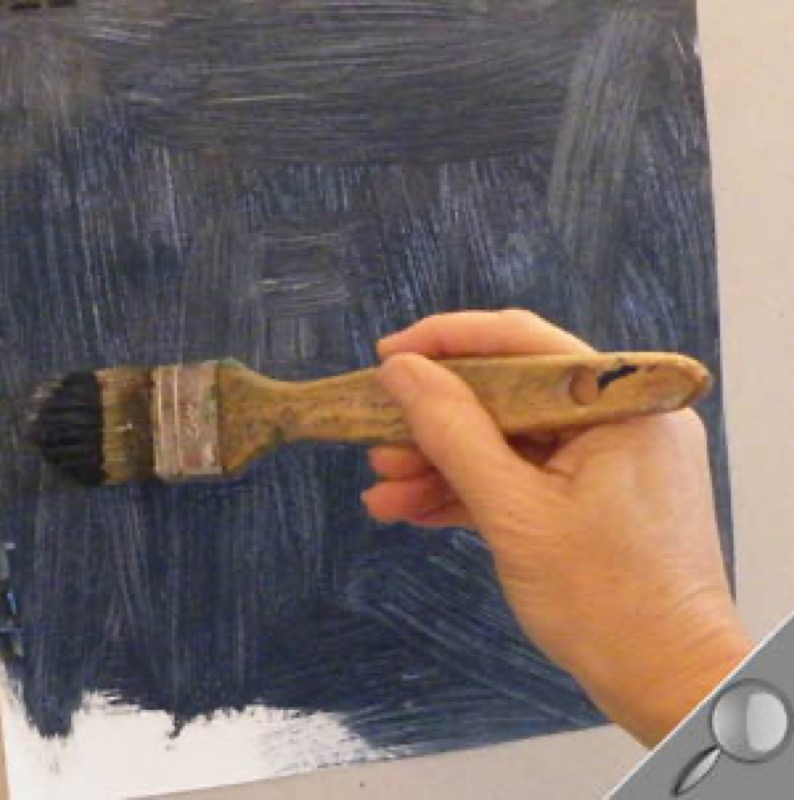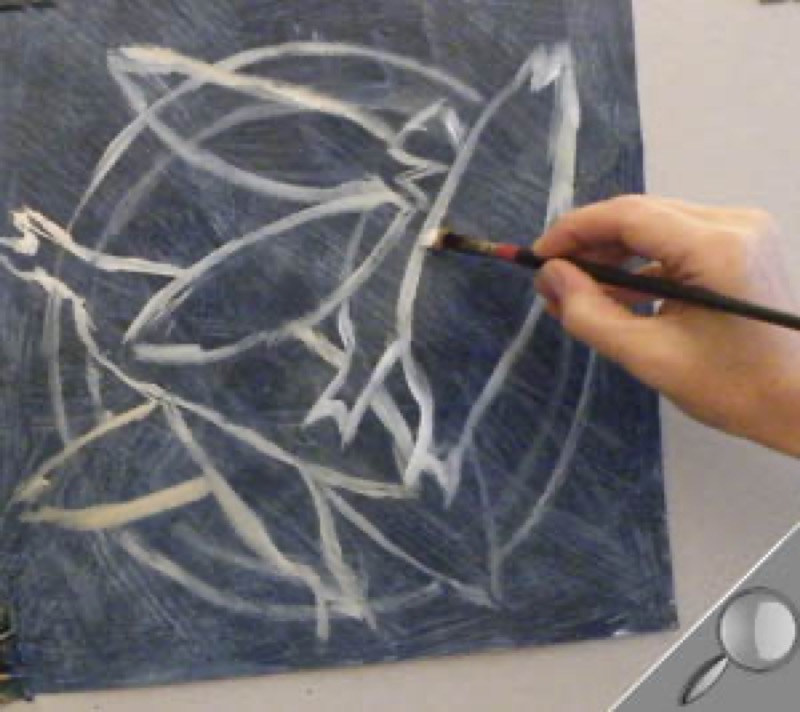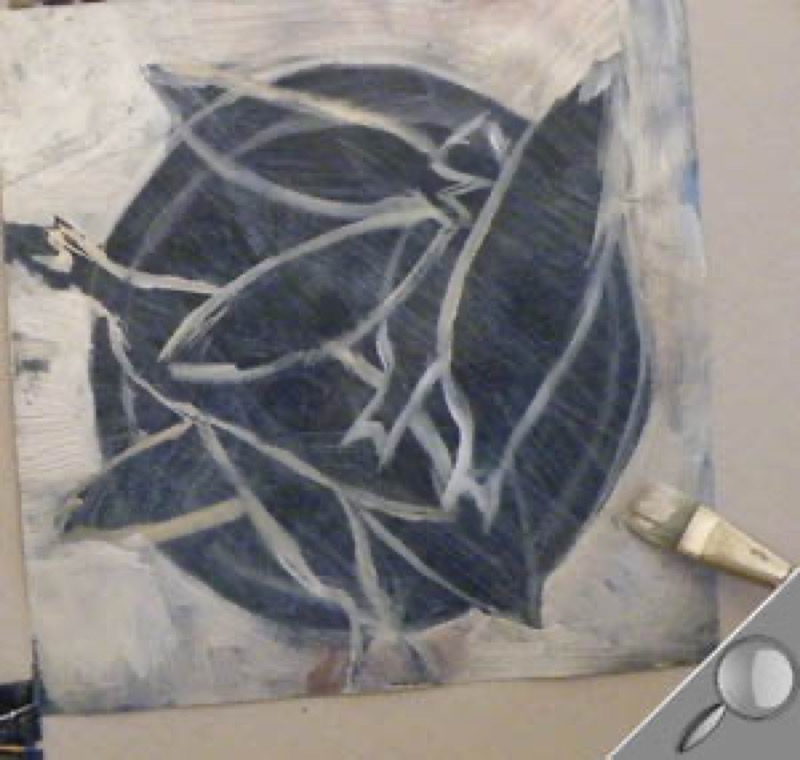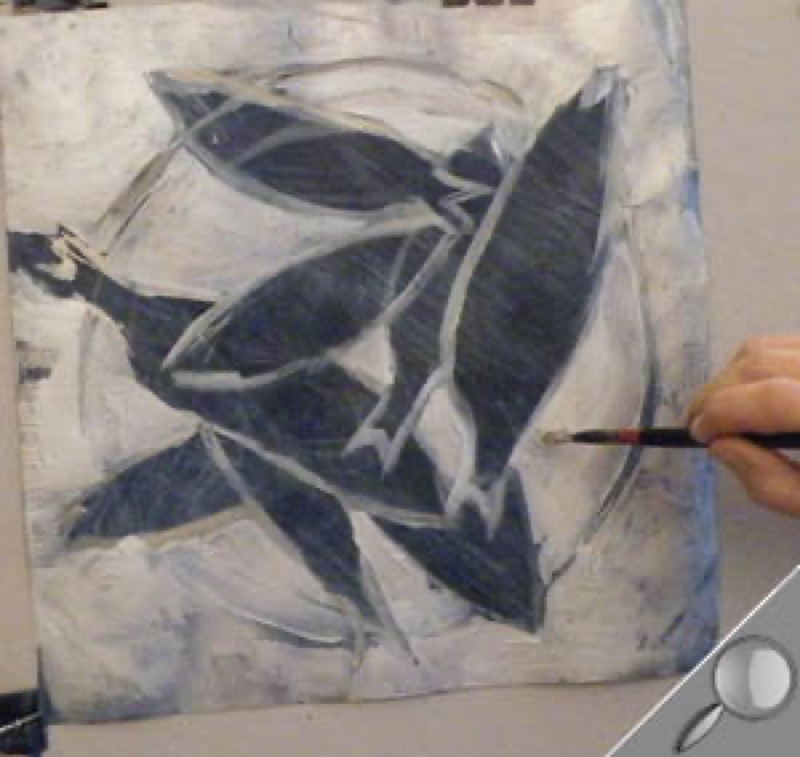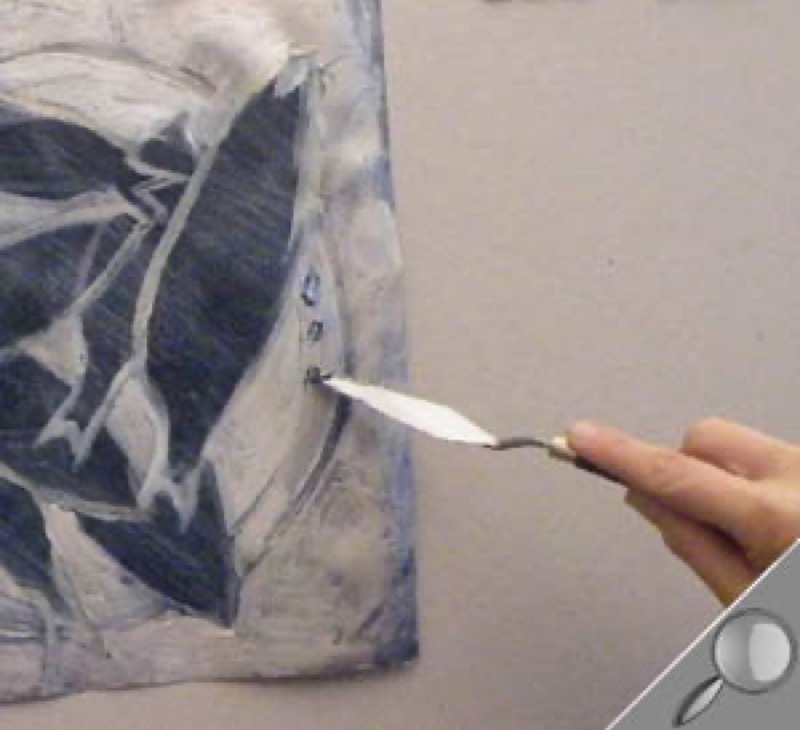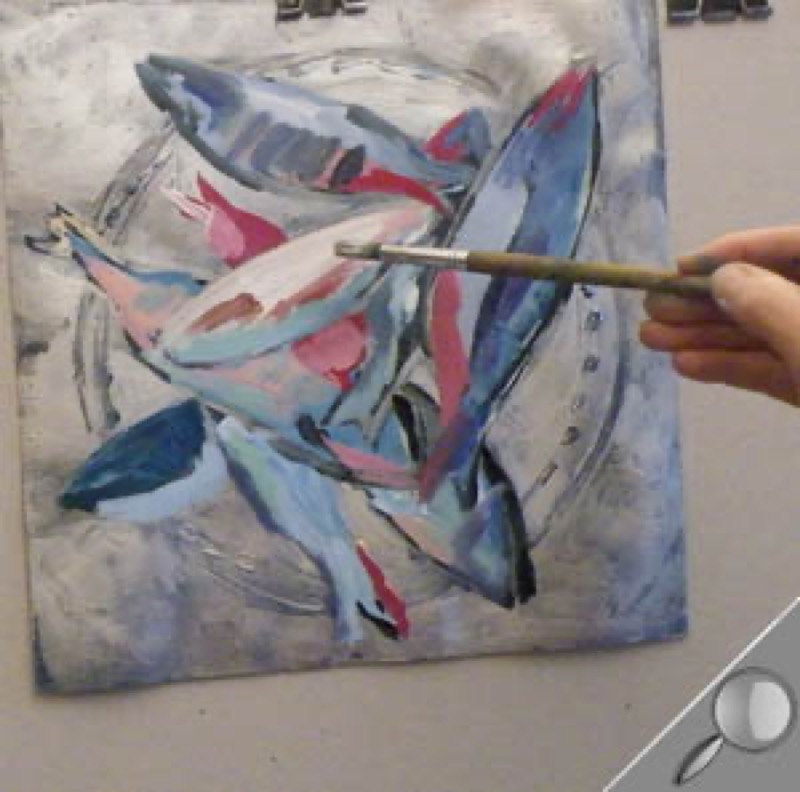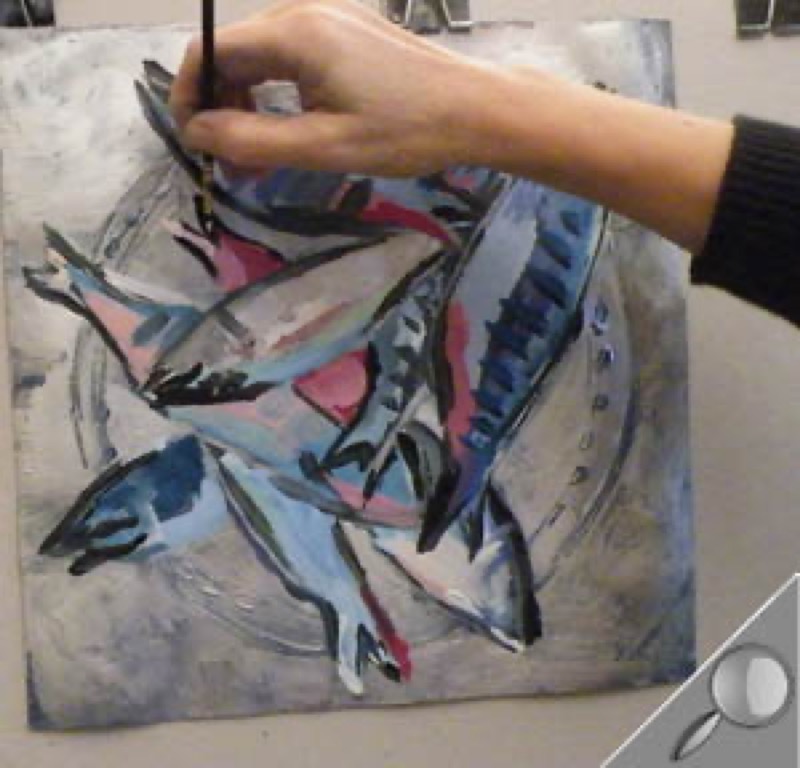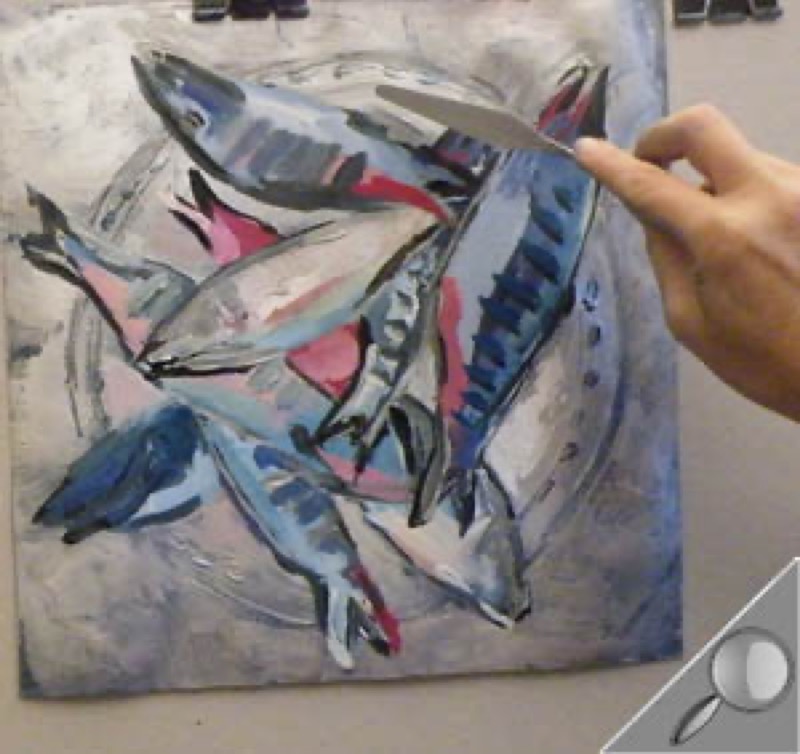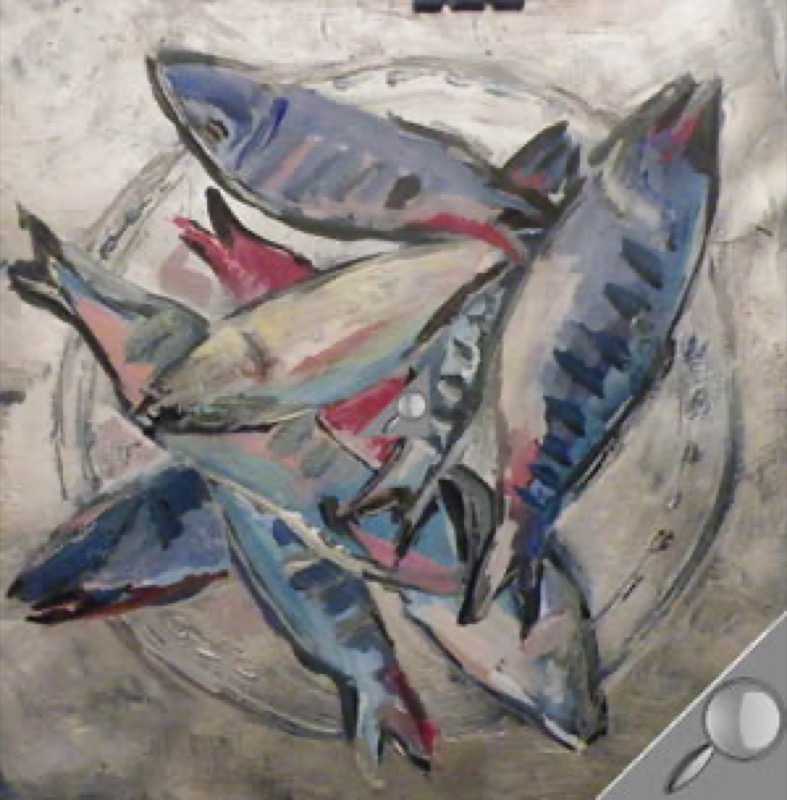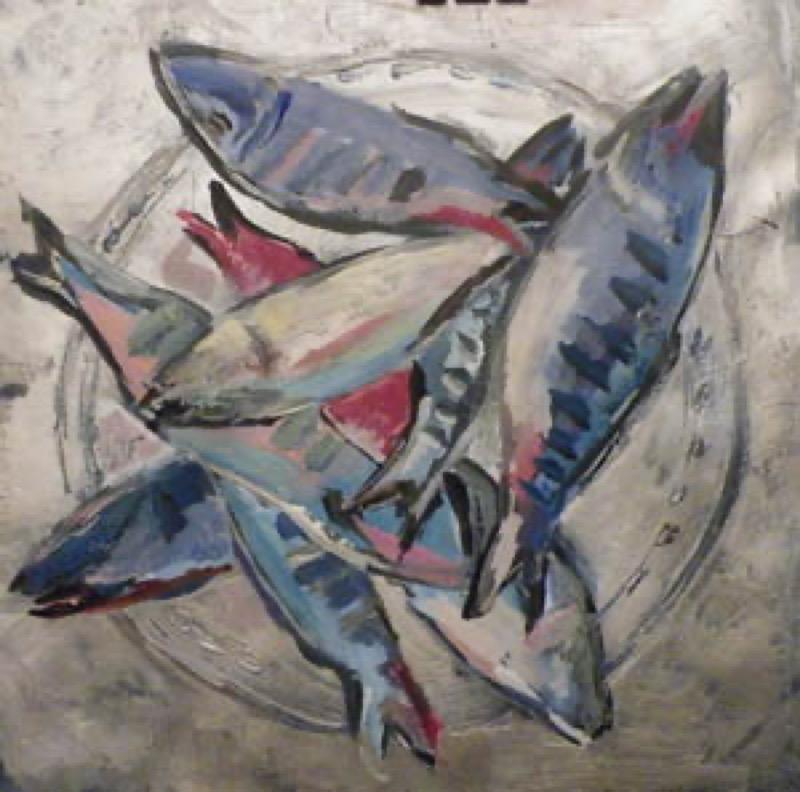
Preparing the paper: ½ hour Time of execution: 3 and a half hours Drying between steps: 3 hours Level: Intermediate
Auteur : A. Porteu
What are the characteristics of acrylic paint? It has an ability to dry quickly and is amazingly workable: these two properties allow you to play around with material and light effects ad infinitum. The following very thorough exercise allows you to explore both color mixtures and changing textures: from satin finish to impasto.
Material
- Paper : Canson® Figueras® 290 g/m2
- Acrylic colors: black, white, warm gray, ultramarine blue, primary blue, phthalo blue, primary yellow, Naples yellow, primary red, Bordeaux red, brown, silver
- Knives, brushes and paintbrushes: 1 medium knife, 1 approx. 5 cm wide flat brush, 1 medium flat brush, 1 medium round brush, 1 medium flat brush, 1 flat paintbrush, 1 fine pointed paintbrush
- Accessories: acrylic gesso, 1 utility knife, 6 plastic plates, 1 sponge, 1 rag cloth, 1 wood board, 4 drawing clips, 1 jar water

